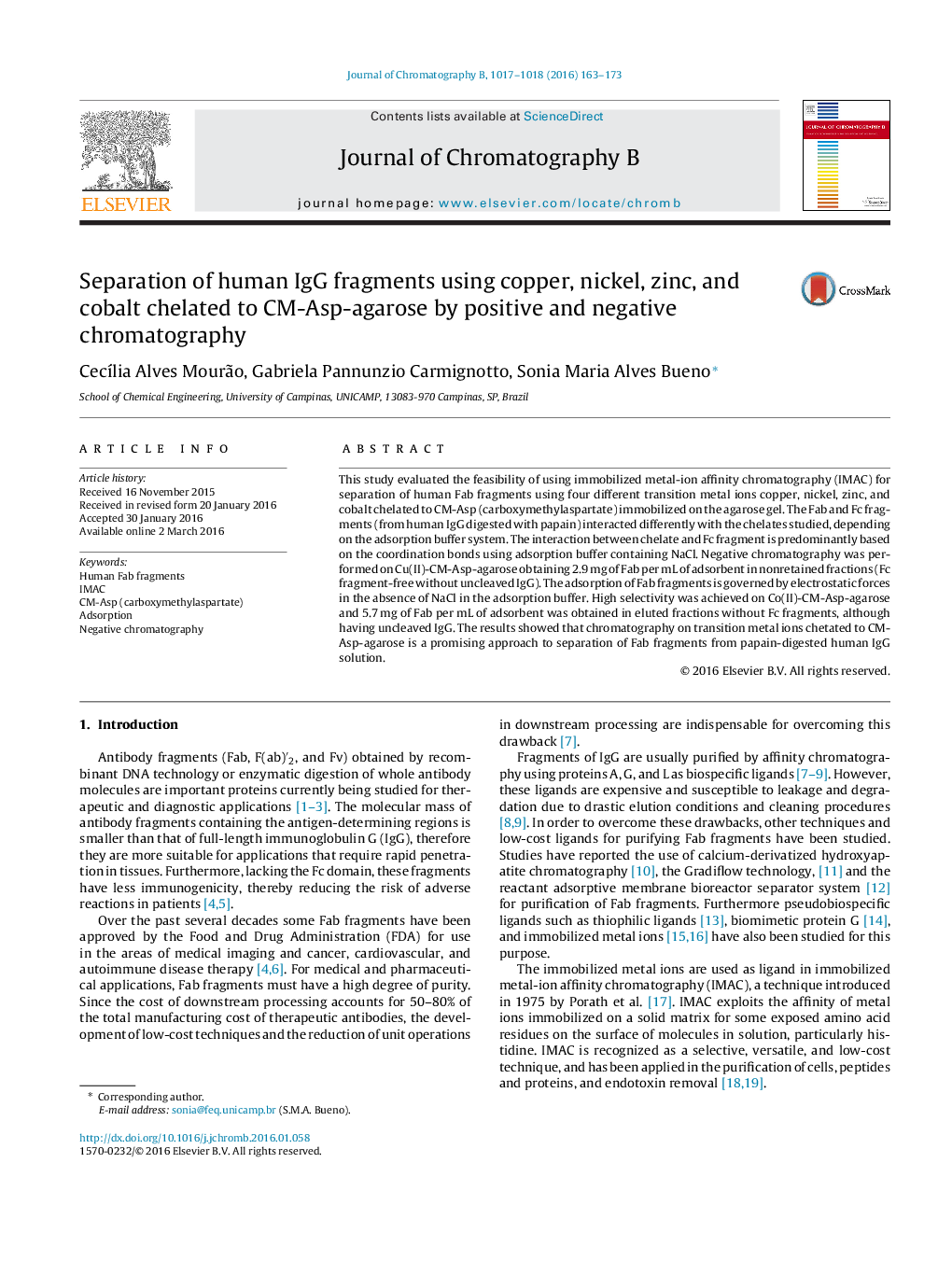| Article ID | Journal | Published Year | Pages | File Type |
|---|---|---|---|---|
| 1211973 | Journal of Chromatography B | 2016 | 11 Pages |
•Fab and Fc fragments interacted differently with Me(II)-CM-Asp-agarose, depending on the nature of the buffer system and NaCl.•Fab fragments were obtained in nonretained fractions of negative chromatography on Cu(II)-CM-Asp-agarose.•Fab fragments were obtained in eluted fractions of chromatography on Co(II)-CM-Asp-agarose.
This study evaluated the feasibility of using immobilized metal-ion affinity chromatography (IMAC) for separation of human Fab fragments using four different transition metal ions copper, nickel, zinc, and cobalt chelated to CM-Asp (carboxymethylaspartate) immobilized on the agarose gel. The Fab and Fc fragments (from human IgG digested with papain) interacted differently with the chelates studied, depending on the adsorption buffer system. The interaction between chelate and Fc fragment is predominantly based on the coordination bonds using adsorption buffer containing NaCl. Negative chromatography was performed on Cu(II)-CM-Asp-agarose obtaining 2.9 mg of Fab per mL of adsorbent in nonretained fractions (Fc fragment-free without uncleaved IgG). The adsorption of Fab fragments is governed by electrostatic forces in the absence of NaCl in the adsorption buffer. High selectivity was achieved on Co(II)-CM-Asp-agarose and 5.7 mg of Fab per mL of adsorbent was obtained in eluted fractions without Fc fragments, although having uncleaved IgG. The results showed that chromatography on transition metal ions chetated to CM-Asp-agarose is a promising approach to separation of Fab fragments from papain-digested human IgG solution.
